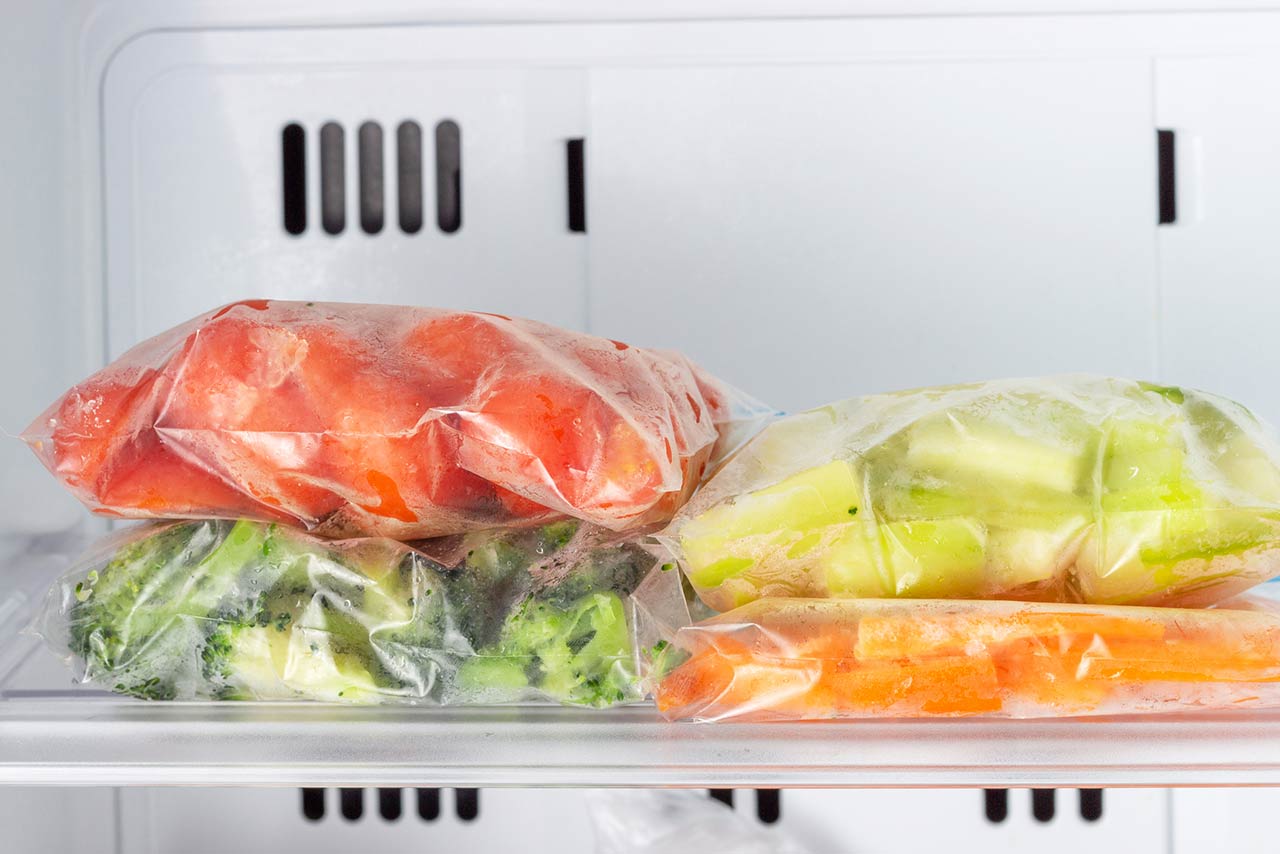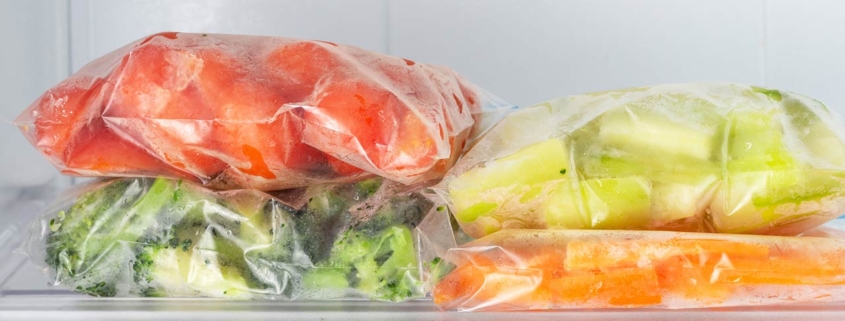Chicago Home and Lifestyles – Garden Produce Preservation

It is that time of year when the amount of produce we are harvesting from the garden, surpasses what we can eat every day. There are several easy ways to preserve these vegetables and retain their flavor and vitamins for months to come.
Tomatoes tend to ripen like crazy and the main crops are ready to pick. Tomatoes freeze well in its whole form and in sauce with just a little preparation. Use firm, blemish free tomatoes. Remove the skin in a hot water bath. Bring a large pot of water to a boil. Cut a small X with a sharp knife in the bottom of each tomato. Drop the tomatoes in the hot water, 3 or 4 at a time. When you see the skin start to pucker remove with a slotted spoon and place them in a bowl of water, full of ice. Core the tomatoes and quarter them over a large bowl to catch any juices. Divide into quart size freezer bags and freeze flat. Date the bags and rotate the use of them. Use the tomatoes that have been frozen the longest first. Each bag will be the equivalent of a 29 oz. can of tomatoes in any recipe. Fresh tomato sauce is delicious, quick and freezes well. It is so wonderful in the middle of winter to thaw out a bag of sauce for that fresh summer taste over pasta. Sauté 1 medium onion in 4 tablespoons of extra virgin olive oil. After the onions are soft, add 4 cloves of garlic (to taste) and sauté until fragrant. Add a quart of peeled fresh tomatoes. You can chop them first or use a masher while cooking for a smoother sauce. Season with salt, pepper and oregano. A good pinch of red pepper flakes gives a nice heat. Cook briefly until the tomatoes collapse. Use as you would any fresh sauce on pasta. Freeze in plastic freezer bags as you would do with the plain tomatoes.
Other vegetables like beans and peas need to be blanched before freezing. Wash and trim the vegetables. Boil one gallon of water and add beans one pound at a time. Simmer small thinner beans 2 minutes and larger beans 3-4 minutes. Remove with a slotted spoon and place them into an bowl of water with ice in it. Drain well and blot with paper towels to remove as much water as possible. Pack into freezer bags. Most vegetables will work with this method.
Cucumbers and hot peppers can be canned without boiling using a quick pickle method. Sanitize your mason jars and lids by boiling in a large pot of water for two minutes. Remove and put them on a towel to drain and cool. Fill the jars with clean hot peppers. Boil equal parts vinegar and water and add to the jars leaving a little space at the top. Cap and screw on rings snug but not too tight. Store out of light and heat, use within a year. Quick pickles are not actually preserved but will last in the refrigerator up to a month. You can leave cucumbers whole, speared or sliced. I prefer sliced, I think they’re more flavorful. Boil 1 cup vinegar with 1 1/2 cups water and 1 tablespoon kosher salt. When salt is dissolved remove from heat and let cool. Add 1 teaspoon whole peppercorns, ¼ teaspoon red pepper flakes, 5 sprigs fresh dill, and 3 cloves garlic to a clean (boiled) mason jar. Pack the jar tightly with the sliced cucumbers. Pour the vinegar mixture in the jar so the cucumbers are completely submerged. Refrigerate at least 24 hours before serving for flavors to meld.
The old method of preserving fruits and vegetables, canning, is coming back into vogue. You can scour farmer’s markets now and find all sorts of veg and fruit to preserve. You will need to invest in some equipment but after the initial investment it will last for years. You can go online and find a good site for additional instructions. Canning is safe; but some procedures must be followed to prevent food borne illness. Check out www.freshpreserving.com/canning-recipes. This site from Ball and Kerr jars explains which vegetables and fruits can be preserved in a water bath and which need to be pressure cooked. You can click on the menu tab here for recipes and guidance.
Kathleen Weaver-Zech and Dean’s Team Chicago

